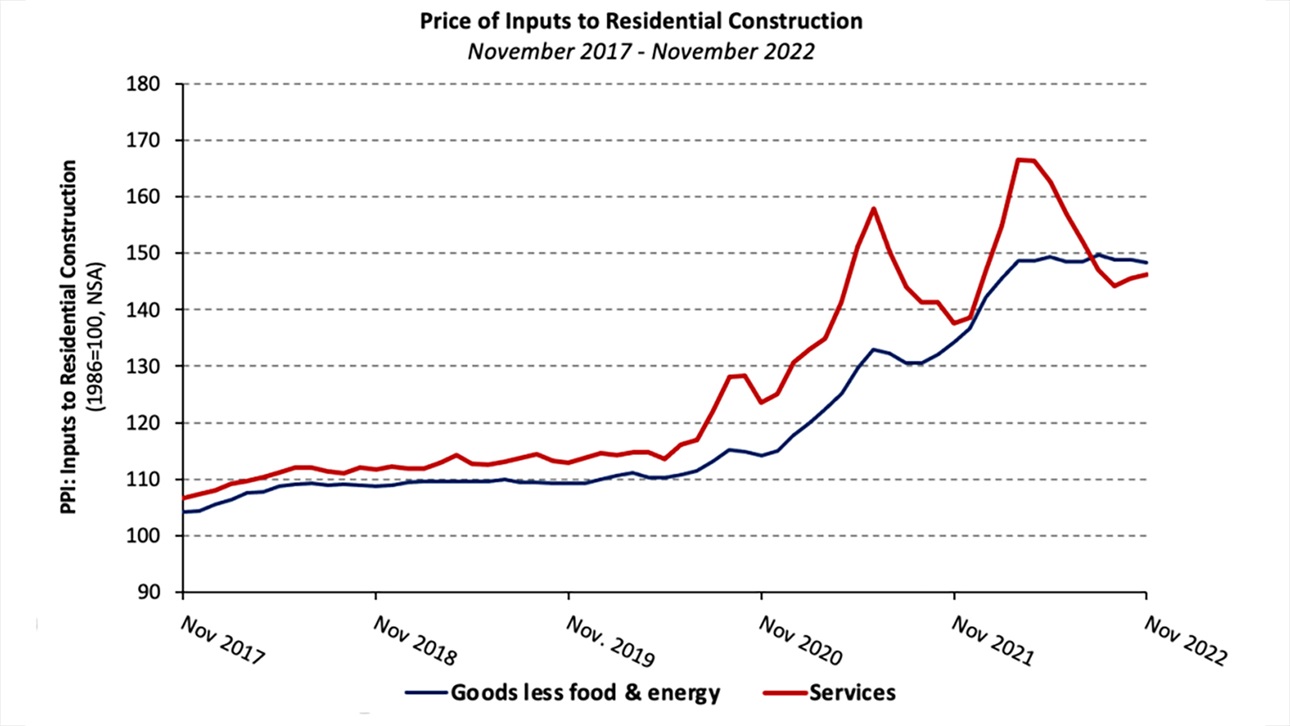Volatility Continues as Lumber Prices Normalize

The prices of building materials decreased 0.3% in November (not seasonally adjusted) following 0.5% and 0.1% declines in September and October, respectively, according to the latest Producer Price Index (PPI) report. The index has decreased five of six months for the first time since 2015.
The PPI for goods inputs to residential construction, including energy, fell 0.8% in November. The index was led lower by a 5.3% drop in energy input prices as the PPIs of regular unleaded gasoline and No. 2 diesel fuel — which comprise more than 80% of energy inputs to residential construction — decreased 6.7% and 4.5%, respectively.
The price index of services inputs to residential construction increased 0.6% in November, propelled higher by large increases in the price of financial and real estate services. It marked the second consecutive monthly increase after six straight months of falling prices.
Softwood Lumber
The magnitude of monthly changes in lumber prices has decreased significantly since July following two and a half years of historic volatility. The PPI for softwood lumber (seasonally adjusted) fell 0.1%, the fourth consecutive monthly decline and seventh decrease in the past eight months. Softwood lumber prices have dropped 42.2% since March.
Ready-Mix Concrete
Unlike softwood lumber, volatility continues to be an issue in the ready-mix concrete (RMC) market and is just shy of the record high set in the middle of the housing boom. RMC prices increased 1.1% in November and are up 20% over the past 22 months, driven by a 3.8% price increase in the Midwest. The index has climbed 10.7% year to date — the largest November year-to-date increase in the series’ 34-year history and four times the pre-pandemic average.
Other materials of note include gypsum building materials, which moved 0.5% higher in November after a small decline in October, and steel mill products prices, which decreased 3% in November after declining 5.5% in October.
David Logan, NAHB’s director of tax and trade policy analysis, provides more in this Eye on Housing post.
